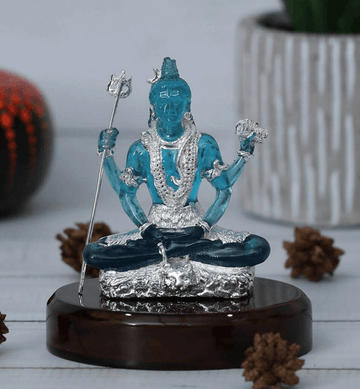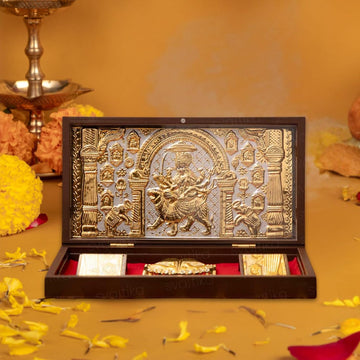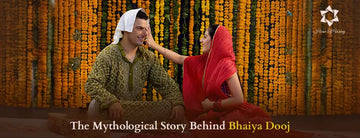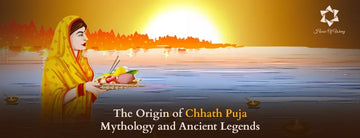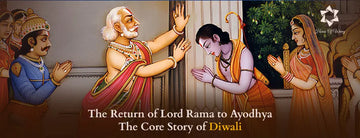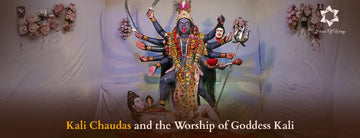Introduction to Bhaiya Dooj
In the list of Hindu festivals in the calendar, Bhaiya Dooj seems simple to celebrate, but its significance is profound. The tale of Bhaiya Dooj is a combination of mythology, love and duty -- it all came nicely packaged in the form of a brother and sister.
And as Bhaiya Dooj 2025 rolls around, the tale remains bursting with life -- a steadfast reminder of the fact that relationships are truly our most valuable assets in life. It’s not about spectacle; it’s about feeling. It’s a day when a sister fasts for her brother’s long life and prosperity, in return for which her brother vows to protect and love her forever.
Historical and Cultural Significance of Bhaiya Dooj
Bhaiya Dooj (also called Bhau Beej in Maharashtra, Bhai Phonta in Bengal and Bhai Tika in Nepal) is the fifth and last day of Diwali. The word "Dooj" means the second day after the new moon, and this religious festival falls on the second day of the lunar month following Kartik, called Nov.
From a cultural perspective, Bhaiya Dooj is perceived to be the antithesis of Raksha Bandhan. Whereas Rakhi celebrates a brother’s promise to protect his sister, Bhaiya Dooj marks a sister’s prayer for her brother’s protection. Together they make up the emotional circle of sibling love – a bond that no distance, time or situation can wear down.
Brothers-sisters throughout India follow the Bhaiya Dooj ceremony with great faith, food and love that makes it one of the most soulful Hindu brother-sister festival in a year.
Legends Associated with Bhaiya Dooj
As with many Indian traditions, Bhaiya Dooj legends are steeped in history and there are several associated with the origin of this festival -- all of which reflect how deeply the bond between a brother and his sister runs.
The most common Bhaiya Dooj story associated with it is that of Yamraj and His Sister, Yami. Another version links it to Lord Krishna and Subhadra. Another is cited in the Ramayana, connecting it to Lord Rama’s return to Ayodhya.
The common emotional thread that runs through each of them is an expression of love in the form of ritual and a translation of faith into blessings.
Bhaiya Dooj in the Ramayana
Lord Rama returned to Ayodhya after 14 years of exile and victory over the king of Lanka, Ravana and on this day, the country celebrated with lights -- the first Diwali. A little later, Rama went to see his sister, Shanta welcomed Lord Rama with aarti, tilak and sweets.
This little gesture of love, a sister receiving her brother when he returned after a long time, is believed to be the reason behind the Bhaiya Dooj celebration. The story of Diwali hence progresses on to Bhaiya Dooj, representing how no festivals in India are standalone, but intertwined beautifully.
Yamaraj and Yamuna in the Festival
The most popular legend has its origins in ancient scriptures and revolves around Yamraj, or the god of death, and his sister Yamuna, who is a river goddess.
Mythology has it that Yamuna was sad over not being able to meet his brother, who was too busy with his divine work. When he did come to see her, Yamuna performed a special Bhaiya Dooj puja -- applying a holy tilak on his forehead, giving him sweets and praying for his safety.
So touched was Yamraj by her love that he granted her a wish - if any brother should meet his sister on this day and consume food “khud ke haatho se” would be with long life, good health and plenty of wealth.
Thus, Bhaiya Dooj became a Hindu holiday of love, faith and protection -- not simply siblings by blood, but all relationships that are rooted in care and connection.
Importance of the Brother-Sister Bond
The world around has made the bond of relationships interesting and pure in India; one such bond is brother-sister bonding festival. It’s not dependence -- it’s emotional equality. The sister is the definition of care and kindness, whereas the brother stands for power and protection.
Bhaiya Dooj turns that point of view into action. When a sister fasts for her brother, cooks special food and puts on the Bhai Dooj tilak, she isn’t just making fun of a ritual but expressing genuine intent. And when the brother brings her gifts and promises to remain by her, it’s a tradition uplifted to trust made visible.
This is why the sister brother relations have been revered so greatly that Bhaiya Dooj meanings go on forever. The values it exemplifies -- love, loyalty and gratitude -- might seem old-fashioned in this fast-changing world.
Traditional Rituals and Puja on Bhaiya Dooj
Although the Bhaiya Dooj celebrations are quite simple, they make a great impact.
The day starts off with sisters Bhaiya Dooj fasting. They clean their houses, make a small altar and gather everything required for the Pooja Essentials, such as pooja–thali to put rice in, vermilion (roli), sandalwood paste, sweets, betel leaves, a couple of lamps (diyas) and sometimes even an idol of Lord Ram or a photograph of Yamuna as part of invocations and blessings.
On the arrival of his brother, his sister puts a tilak on her brother's forehead and offers him sweets and aarti. As a token of gratitude, the brother showers gifts -- typically clothes, jewelry or money -- on his sister.
Sisters even draw a line on the doorstep in some areas, considered to represent security from negativity for their brother.
Each detail of the Bhaiya Dooj puja -- from the diya flame to the sweets -- means something. Where the flame represents warmth, tilak divine protection and a shared meal together.
Gifts and Celebrations Between Siblings
While rituals form the base, celebrations in Bhaiya Dooj are what make it a joyous occasion. In contemporary families, thoughtful presents are exchanged -- gadgets, customized hampers or even handmade letters -- and the effort means the most.
Sisters cook traditional food - puri or halwa or kheer or basundi as per customs prevailing in their region. For their part, brothers shower their sisters with gifts or even chart out a family trip.
Small or large, these gestures combine to make Bhaiya Dooj one of the more emotionally rich Hindu festivals of the year -- and proof that love still makes it home.
Regional Variations of Bhaiya Dooj
- Bhaiya Dooj is called by various names in India.
- In Maharashtra and Goa, it’s known as Bhau Beej.
- In West Bengal, it is Bhai Phonta, during which sisters put a special sandalwood paste tilak.
- In Nepal, it’s Bhai Tika, which is part of the Tihar festival and includes elaborate rituals and a colorful rice tilak.
Among the differences, there is one feeling, a kind of unspoken reassurance that no matter what you do, someone will have your back at all times!
Modern Relevance and Lessons from Bhaiya Dooj
In today’s fast-paced digital age, the message of Bhaiya Dooj seems even more resonant. So many siblings live in different cities or countries, and video calls more closely unite us than visits. Yet, the emotion remains unchanged.
The Bhaiya Dooj significance lies in reminding us that relationships require rituals -- not for religious purposes, but for remembering. A diya or a tilak is one more way of shouting, “I’m thinking about you and I’m grateful that you’re here.”
So even if you are far away from home this Bhaiya Dooj 2025, don't forget to connect - be it through message, a call or a virtual tilak. The tradition live on, not in what we do but in how we feel.
Conclusion
Bhaiya Dooj story is more than just Yamuna and Yamaraj or Lord Rama and Shanta -- it’s about every sister who prays and her brother who promises.
It shows us that divinity is not remote but rather runs through those simple acts of tending. Be it by puja on Bhaiya Dooj, fasting, or the exchange of gifts, the festival somehow strikes out at what truly counts in life -- love, care and being together for others.
So, when you light that diya and organise your coconut, chawal and lawang one more time this year: remember, the festival may have a duration of a day, but the bond it’s celebrating between brothers and sisters is forever.
Because love -- when it is inseparable from faith -- never dies.

